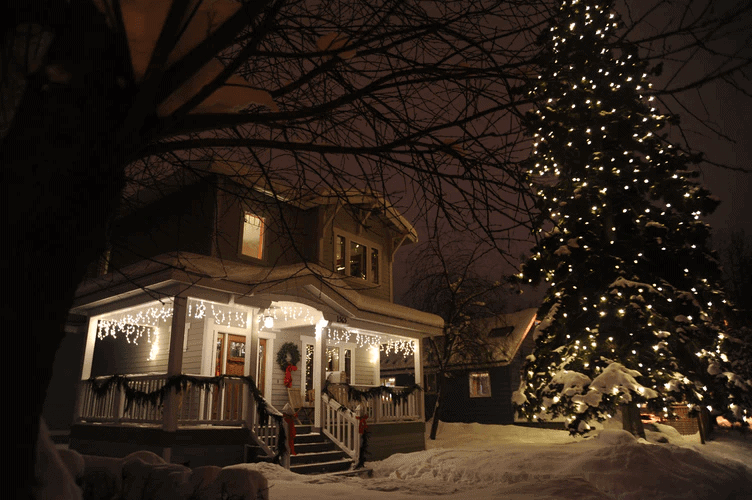High Theft Seasons You Need to Watch Out For

As summer rapidly approaches, most of us are too busy making plans and packing to think of the home we’re leaving behind as sitting targets. Burglary, like any other crime, follows patterns and fluctuates depending on seasonal trends. If you’re aware of these facts, you’ll be able to secure your home well in advance and truly kick-back during your hard-earned summer getaway.
Facts on Burglary
According to the FBI, a burglary takes place every 26 seconds in America, adding up to over 3,300 burglaries per day. This statistic may be small in comparison to the number of households in America, but it’s significant, and the financial costs of a break-in can be staggering. On average, households experience a $2,799 loss from burglaries according to a survey from Safewise.
On top of recovering from financial setbacks, burglary victims experience a deep emotional toll as well, mourning both the loss of treasured valuables and the security they had before the home invasion. 63% of respondents said they had trouble sleeping after the burglary.
These facts are hardly surprising, but one statistic defies common logic. When we picture a burglary, we imagine a pair of thieves sneaking in under the cover of darkness. However, this isn’t the case: a 2018 FBI burglary report showed that 51% of burglaries occur during daytime hours, compared to only 32% at night.

Seasonal Changes
Now that you know the basic stats on burglary, let’s talk seasonality:
- A report from the U.S. Department of Justice showed that from 1993 to 2010, on average, burglary rates were highest in the summer, with about 9% lower rates in spring, 6% lower in fall, and 11% lower in winter.
- This difference is so staggering, a Safewise survey found that more people are burglarized in June than any other month, regardless of year.
This isn’t by chance: burglars know most families take vacations during the summer. If your home displays signs of extended absence — unkempt lawns, overstuffed mailboxes, dark windows — it’s likely to catch a thief’s eye. And, since you’re away, they’ll also have more time to scope out your property unnoticed and plot their break-in.
Although summer is the prime break-in season, law enforcement officials nationwide also report burglary upticks during winter months. In some states, December is even the peak month for burglaries overall.
Once again, criminals know most families take off for Christmas vacation during this time — leaving behind a treasure trove of presents. Similar to the overgrown summer lawns, winter storms can leave behind snowdrifts. If the snow sits untouched for several days, it’ll be pretty obvious you aren’t home. What’s more, if you leave behind a trash bin stuffed with wrapping paper and boxes, burglars can pursue your new Christmas gifts and decide what to steal before even breaking a window.

How to protect your home
Though criminals are almost certainly passing through neighborhoods more during vacation months than any other season, there’s no need to fret. Follow these tips to shore up your defenses and keep burglars at bay.
- Home care: Like we said above, burglars target homes that look uncared for. Whether you’re going on vacation or not, it’s important that you keep your home looking tidy and lived-in, especially during peak break-in periods. This means regularly mowing your lawn, pruning hedges, and keeping a light or two on at all times. You can do this last bit no matter how far away you are from home: just plug your lamps into a simple timer and set it to random. The lights will turn off and on at different intervals, giving the appearance of someone always being home.
- Help from neighbors: If you have a trusted neighbor or friend who lives nearby, you can ask them to monitor and tend to your home while you’re away. Depending on your closeness, you can have them care for your lawn, collect mail, and do regular check-ins to make sure everything is ok on the inside of your home.
- Security system: In general, burglars steer clear of homes with security systems in search of easier targets. If you’re looking for a way to really beef up your home’s defense, this is the move. Most alarm systems with 24/7 professional monitoring for far less than the average break-in cost (some even go as low as $200), and can be installed by the homeowner. If you want to go the extra mile, install a security camera in a highly visible location like beside your front door. Security cameras are fantastic at stopping thieves in their tracks, and allow you to monitor your home from anywhere.
- High-security locks: No matter how well-guarded and cared for your house is, nothing beats the protection of a good lock. Though the locks that come standard with a home or apartment usually aren’t the most secure, they’re easy to fix. A locksmith can swap out your old, single-cylinder lock for one with pick-proof protection, or install a deadbolt for good measure.
- Think before you post: Burglars look for patterns of behavior, sometimes stalking the homeowners of their target house for weeks in advance. Don’t help them out by posting your whereabouts online. If a burglar knows your name, they can easily find your social media, and search for signs that you’re away from home. Posting vacation plans, location-tagged photos, or the scenic view from your getaway spot serve as dead-giveaways. Posting about your life is fine, just leave out the specifics.



